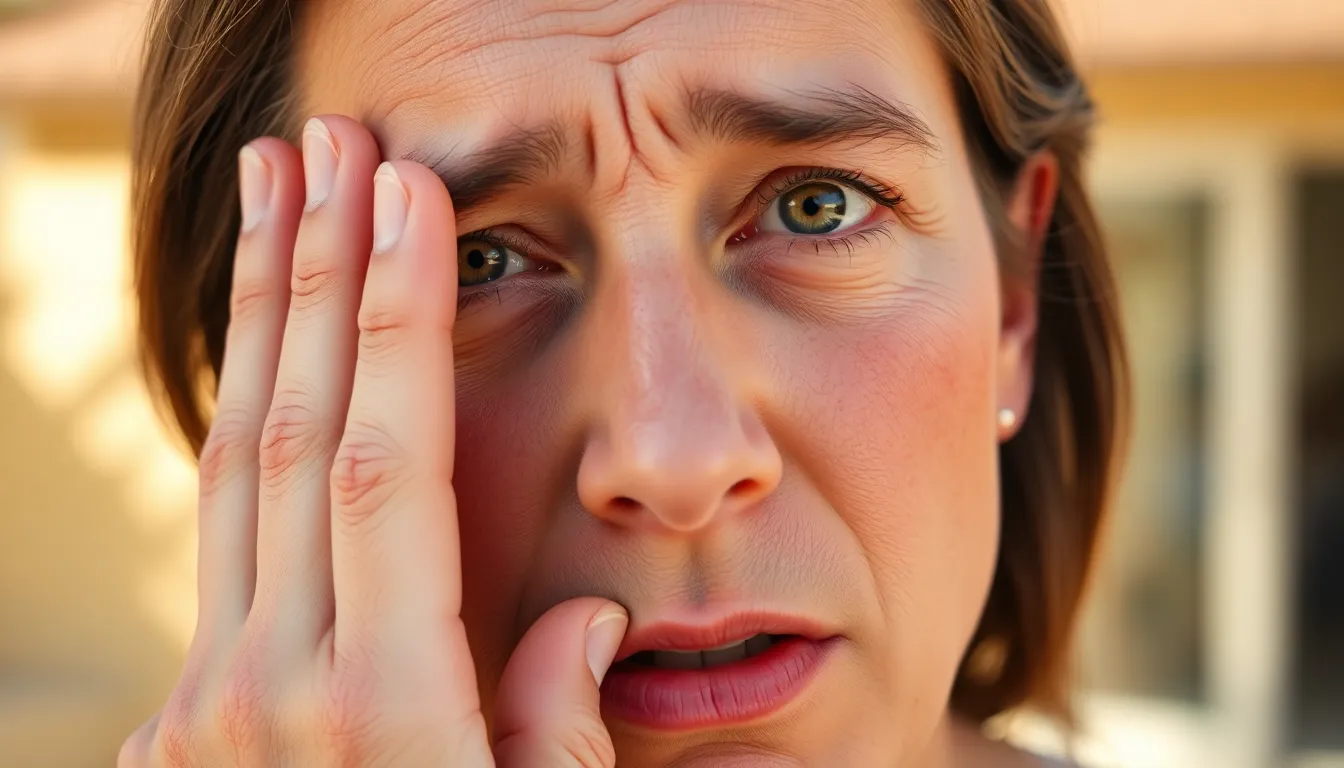Table of Contents
ToggleRed hot cheeks can turn even the most composed adult into a blushing tomato. Whether it’s an unexpected compliment or a spicy encounter with embarrassment, those fiery cheeks have a way of stealing the show. But what really causes this sudden flush? Is it just a sign of a wild night out or something more?
Understanding Red Hot Cheeks in Adults
Red hot cheeks in adults stem from various causes, often signaling physiological responses. Flushing frequently occurs due to increased blood flow to the skin’s surface. Emotional triggers like embarrassment, anger, or excitement can amplify this response.
Certain medical conditions also contribute to this phenomenon. Rosacea, a skin disorder, often manifests as redness and visible blood vessels on the face. Allergies to foods or environmental factors can cause similar reactions, leading to angry, flushed cheeks.
Alcohol consumption serves as another common cause. Drinking can dilate blood vessels, resulting in noticeable flushing. Even spicy foods may trigger this reaction, as they stimulate nerve endings in the skin.
Medications play a role as well. Some treatments, particularly those for blood pressure or other cardiovascular conditions, may lead to skin flushing as a side effect.
Other factors include hormonal changes, such as those experienced during menopause. Shifts in serotonin levels can also contribute, resulting in sudden reddening.
Understanding individual triggers aids in managing symptoms effectively. Monitoring situations that lead to red hot cheeks helps identify strategies for control. Identifying and addressing the root cause allows for better management of this condition.
Common Causes

Red hot cheeks in adults can result from a variety of factors. Identifying these causes helps in addressing flushing effectively.
Allergic Reactions
Allergies often lead to red hot cheeks. Certain foods, medications, or environmental triggers, like pollen or pet dander, can provoke an allergic response. Skin reactions, including hives or rashes, may also present alongside facial flushing. Histamine releases during allergies cause blood vessels to dilate, increasing blood flow to the skin. This response results in redness and warmth on the cheeks. Monitoring specific allergens assists in managing this condition.
Environmental Factors
Environmental factors play a significant role in causing red hot cheeks. Extreme temperatures, such as cold winds or hot sunlight, can trigger facial flushing. Humidity also contributes, as sweating can lead to increased blood flow to the face. Additionally, warm baths or saunas might exacerbate flushing due to their heat effects on the skin. Individuals can minimize exposure to harsh environmental conditions to reduce occurrences of red hot cheeks, enhancing overall comfort.
Medical Conditions
Red hot cheeks in adults can signal various medical conditions that contribute to facial flushing. Understanding these conditions aids in recognizing the triggers.
Rosacea
Rosacea is a chronic skin condition primarily affecting the face. It leads to persistent redness, visible blood vessels, and often red, inflamed bumps. Individuals with rosacea experience increased sensitivity to environmental factors. Heat, sunlight, and spicy foods can exacerbate symptoms, causing an intensified flush. Managing rosacea typically involves lifestyle changes, topical treatments, and sometimes oral medications. Seeking professional advice ensures effective management of the condition.
Hormonal Changes
Hormonal changes significantly impact the body’s physiological responses. Menopause in women often results in hot flashes, which cause sudden red hot cheeks. Flushing during this time occurs due to hormonal fluctuations, particularly estrogen levels. Thyroid disorders can also trigger facial redness, as thyroid hormones affect blood flow and skin temperature regulation. Monitoring these hormonal levels and seeking medical evaluation can provide insights into potential management strategies for individuals experiencing significant flushing due to hormonal changes.
Lifestyle Factors
Lifestyle choices can significantly impact the occurrence of red hot cheeks in adults. Various factors, including alcohol consumption and emotional stress, contribute to flushing.
Alcohol Consumption
Alcohol consumption often leads to facial redness. Drinking alcohol dilates blood vessels, which can increase blood flow to the skin’s surface. Red wine, beer, and spirits are common culprits responsible for this reaction. Individuals with rosacea or alcohol intolerance may experience more pronounced flushing. Even small amounts can trigger symptoms. Opting for lower-alcohol beverages or limiting intake may help mitigate these effects. Hydration before and during drinking can also reduce redness.
Stress and Anxiety
Stress and anxiety frequently influence skin responses. Emotional states trigger the body’s fight-or-flight reaction, resulting in increased blood flow to the face. Individuals facing social pressures or personal challenges may notice heightened redness. Regular stress management techniques, such as mindfulness and yoga, can effectively lessen these reactions. Additionally, seeking professional support might be beneficial for those experiencing chronic stress. Understanding triggers can empower individuals to find effective coping strategies, thus reducing facial flushing.
Red hot cheeks can be a complex issue influenced by various factors. Understanding the underlying causes can empower individuals to manage their symptoms more effectively. By identifying personal triggers and making lifestyle adjustments, such as reducing alcohol intake and practicing stress management techniques, individuals can mitigate the frequency and intensity of facial flushing.
For those experiencing persistent or severe redness, consulting a healthcare professional is essential. This ensures that any underlying medical conditions are addressed appropriately. Ultimately, awareness and proactive management can lead to greater comfort and confidence in social situations.




